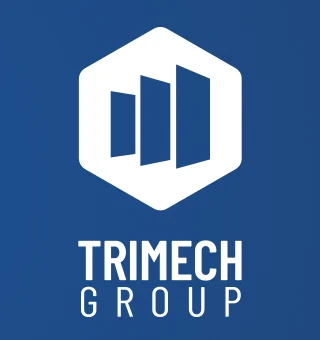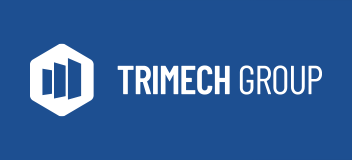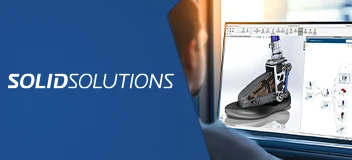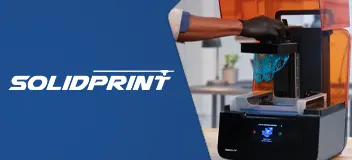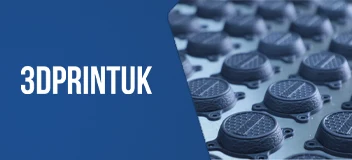Administering SOLIDWORKS PDM Standard Training Course Overview
The focus of this course is on the fundamental skills and concepts central to the administration of the SOLIDWORKS PDM Standard system.
The intended audience for this course is anyone who will administrate users, workflows, and files with SOLIDWORKS PDM Standard.
The goal of this course is to help you prepare, plan, and test a SOLIDWORKS PDM Standard system prior to a full implementation at your business.
Administering SOLIDWORKS PDM Standard Course Requirements & Benefits
Understand the course requirements and the skills you will acquire after completing the course
"The Administering SOLIDWORKS PDM course provides a great overview of PDM functionality, and helps in setting up an initial vault."
— Jorge Nogueria, Precision Resource Tech Centre
"The course was clear and concise; dealt with broad PDM issues outside of the training agenda."
— Dean Karellas, ULA-Matic Inc.
Administering SOLIDWORKS PDM Standard Lessons
The following lessons are included in the course
Lesson 1: Installation Planning
- Planning for SOLIDWORKS PDM Standard
- Questions
- The Planning Process
- Data Management plan
- Implementation plan
- Training Scenario
- The Installation Process
- SQL Server Express
- Databases
- SOLIDWORKS PDM Standard Client
Lesson 2: The Administration Tool
- SOLIDWORKS PDM Standard Administration Tool
- Starting the Administration Tool
- Local settings
- Group policies
- Settings
- Creating a SOLIDWORKS PDM Standard file vault
- Case Study: Create a New File Vault
- Create a Local File Vault View
- Create a local view
- Why the root folder?
- Sharing the vault view
- Setup Overview
- View setup utility
- Access control
- Metadata
- Workflow
- Vault maintenance
- Exercise 1: Create File Vault and Vault View
Lesson 3: Users and Groups
- Users
- Create new users
- User information
- Copy permissions
- Case Study: Creating Users
- User properties
- Groups
- Administrative permissions
- Folder permissions
- Assigned folder permissions
- State permissions
- Transition permissions
- Permissions per file
- Search cards
- Bill of materials
- Warnings
- Cache options
- Copy tree
- Change user password
- Delete a user
- Managing multiple users
- Missing user login information
- Groups
- Case Study: Create a New Group
- Assign group permissions
- Manage multiple groups
- Exercise 2: Users & Groups
Lesson 4: Folder Card Creation
- Data Cards
- Card editor
- Anatomy of a Data Card
- Controls
- Card editor
- Card associations
- Installed cards
- Options
- Designing a data card
- Case Study: Design a Folder Data Card
- Static text control
- Select control
- Image control
- Frame control
- Data card variables
- Variable editor
- Variable editor functions
- Variable listing
- Variable definition
- Variable mappings
- Best practices
- Create new variables
- Editbox control
- Command button control
- Combobox dropdown control
- Combobox droplist control
- Tab control
- Checkbox control
- Data field control
- Alignment controls
- Card grid settings
- Select font
- Exporting data cards
- Excercise 3: Folder cards
Lesson 5: File and Search Cards
- Importing Data Cards
- Case Study: Design a File Data Card
- Radio-button control
- Card control logic
- Search cards
- Case Study: Design a search data card
- Controlled tabs
- Glue controls
- Card search control
- Variable search control
- Search card default values
- Quick search in Windows Explorer
- Case Study: Setting up Quick Search
- Exercise 4: File Cards
Lesson 6: Column and Bill of Materials (BOM) Views
- Columns
- File list column
- Search column
- Case Study: Columns
- Bill of Material
- Case Study: BOM
- Exercise 5: Create Column and BOM Views
Lesson 7: Workflow
- Workflows
- Workflow conditions
- Creating workflows
- Open an existing workflow
- Saving a workflow
- Rearranging the workflow
- Case Study: Create New Workflow
- Workflow state
- Workflow transitions
- Revisions
- Revision component
- Case Study: Create New Revision Schemes
- Transition actions
- Drawing Revision Tables
- Case Study: CAD Files Revision Scheme
- Exercise 6: Revisions and Workflows
Lesson 8: Notifications and Tasks
- Notifications
- Workflow notifications
- Case Study: Assign Notifications
- Tasks
- Add tasks to vault
- Task host configuration
- Case Study: Convert task
- Executing tasks
- Exercise 7: Notifications
Lesson 9: Data Migration
- Migrating Legacy Data
- Data migration planning
- Clean data
- What to migrate
- Case Study: Data Migration
- Update references
- Migrating Revisions
- Set revision
Lesson 10: Vault Backup
- Backing Up File Vaults
- Database backup
- Archive server settings backup
- Archive files backup
What makes a good SOLIDWORKS PDM Administrator?
The successful implementation, use and growth of SOLIDWORKS PDM, is largely dependent on the skill of the administrator. Below are some characteristics that make for a good SOLIDWORKS PDM Administrator:
- Ability to form concession:
- Individuals and groups can have differing goals and priorities. A good PDM Admin should be able to form a solution, that the majority can agree on.
- Ability to make decisions:
- At times concession is not practical or possible. A good PDM admin should be able to make decisions that benefit the company as a whole.
- A solid understanding of the company's policies and processes:
- In order to ensure that PDM reflects important company policies and processes, a good PDM Admin should have a good understanding of these policies and processes and/or be able to easily access information on these policies and processes.
- General computer skills:
- A comfortable working understanding of computers and a general understanding of networks.
- The admin should also have access to technical resources such as IT/IS.
- Time to maintain and administer PDM:
- The PDM Admin should be able to schedule time for maintaining PDM (updates).
- General troubleshooting.
- Developing and growing the use of PDM in order to take full advantage of the automation and time savings offered by SOLIDWORKS PDM.
Training Methods
Choose the training method right for you

Group/Public Training
Receive training as a group (limited amount per class) from certified instructors using vendor approved training content and methodologies.
Training is delivered either live online or in a traditional classroom environment.
Advantages
- Cost effective training method.
- More effective than video based training, with videos learners are often not as focused on the training and skip exercises.
- Learn more through group questions and feedback.

Private Training
This style of flexible training is perfect for teams or individuals who are faced with a specific challenge and require personalized courses with on-the-job coaching.
Training is available live online, in-person classroom or onsite at your location.
Advantages
- Use our state-of-the-art mobile classroom at your facility.
- Bring your team up to a consistent level of knowledge by having them take the same training at the same time.
- Benefit from flexible scheduling options.
Upcoming Training Courses
Choose a scheduled Administering SOLIDWORKS PDM Standard course
Are you using SOLIDWORKS to its full potential?
Enhance your skills and capabilities with a SOLIDWORKS Training Assessment from TriMech.
